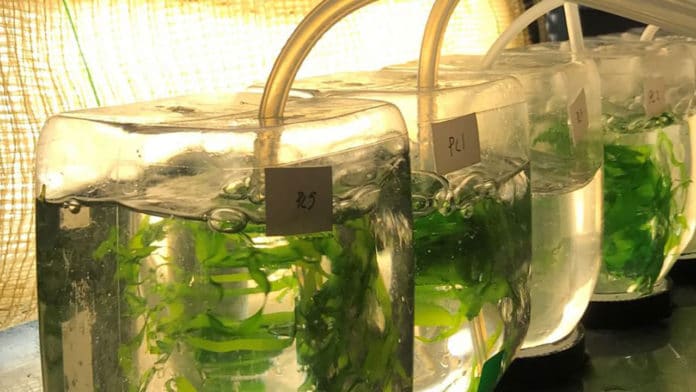Agricultural and food processing operations typically generate a lot of wastewater. It has significant potential to pollute land, air, and water because of its high Chemical Oxygen Demand (COD) and sheer volume. The wastewater needs to be cleaned up before being released back into local waterways.
New research has shown that process water from food production can serve as an excellent fertilizer in seaweed cultivation.
In their study, researchers at the University of Gothenburg and Chalmers University of Technology collected process water from several different food producers – from the herring industry, salmon farming, shellfish processors, and a manufacturer of oat milk. A certain amount of process water with a controlled nitrogen and phosphorus content was then added to the water used to grow four different varieties of sea lettuce in a land-based seaweed farm.
After eight days, researchers analyzed the results and found that all types of process water drastically boosted the growth and protein content of all varieties of sea lettuce. The seaweed grew more than 60% faster, and the protein content quadrupled with the addition of process water. In addition, test panels did not note any impact on the taste of the seaweed from the process water.
Researchers also believe that this may be an alternative source of protein in future foods. “The protein content of soybeans is about 40%. By using process water, we have increased the protein content in the seaweed to more than 30%,” says Kristoffer Stedt, a doctoral student at the Department of Marine Sciences at the University of Gothenburg.
In the future, the team will focus on scaling up the experiments with seaweed cultivation. They will use the process water from the herring industry, which showed very promising results, and focus on the species Ulva fenestrata (sea lettuce). It could also be a completely circular system if we used cultivated seaweed as feed for salmon culture on land and used the process water to fertilize the seaweed cultivation.
“We think that you could have land-based cultivations of algae, such as sea lettuce, near a herring factory, for example. Seaweed cultivation can cleanse large portions of the nutrients from the process water. That brings us closer to a sustainable approach, and the companies have another leg to stand on,” says Stedt.
